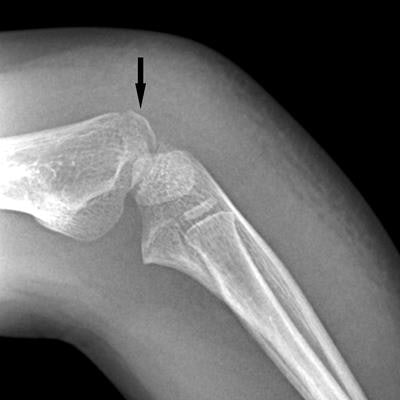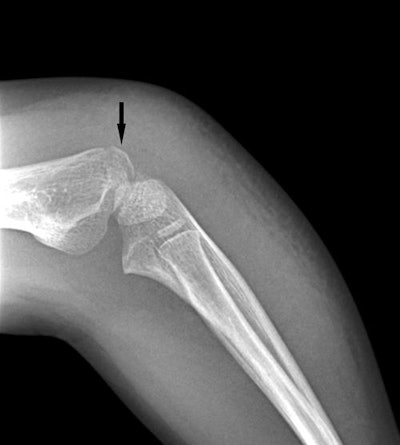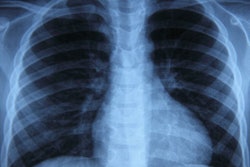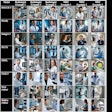
Radiology departments are facing a conundrum from the growing number of urgent care centers sending them x-rays that may not be of optimal diagnostic quality. A department in Texas offers some tips for improving urgent care pediatric imaging in research published online February 2 in the Journal of the American College of Radiology.
Researchers from Texas Children's Hospital in Houston found that there were subtle -- but statistically significant -- differences in image quality between urgent care images that were acquired with a registered radiologic technologist (RT) present and those where an attending general physician supervised the process. While it's not always economically feasible to have an RT onsite at a pediatric urgent care center, it doesn't mean radiology departments should give up on helping these sites improve their image quality, wrote a group led by Dr. J. Herman Kan.
"We have to keep in mind that we're exposing children to radiation, so it's imperative to get diagnostic quality images," Kan told AuntMinnie.com.
Urgent care
 Dr. J. Herman Kan from Texas Children's Hospital.
Dr. J. Herman Kan from Texas Children's Hospital.
Kan and colleagues sought to assess x-ray quality at pediatric urgent care centers with and without radiologic technologists. The group compared 235 radiographic exams performed at four pediatric urgent care centers without a technologist and 83 exams performed at two centers with a technologist.
The researchers evaluated the studies for quality using a five-point scale (1 = poor, 5 = best), assessing field-of-view, presentation, and orthogonal view orientation, as well as incidence of positive results, the need for repeat imaging, and discrepancies between initial imaging and follow-up exams. The average daily number of x-ray exams taken at facilities with dedicated technologists was 1.36, and the average number taken at facilities without dedicated technologists was 0.96.
The incidence of repeat imaging, discrepancy rates between initial imaging and follow-up, and the incidence of abnormal radiographic findings did not differ significantly between the two groups. But the researchers did find significant differences between them for field-of-view, presentation, and orthogonal view orientation -- in favor of exams performed by technologists.
| Quality of x-ray images at urgent care clinics | |||
| Measure | Exams performed by attending physicians | Exams performed by technologists | p-value |
| Field-of-view | 3.98 | 4.29 | 0.014 |
| Appropriate presentation | 4.39 | 4.51 | 0.045 |
| Proper orthogonal view orientation | 4.45 | 4.69 | 0.033 |
"Our study demonstrates that the quality of radiographic imaging at pediatric urgent care centers is statistically improved when a registered radiology technologist operates the radiographic equipment compared with a pediatrician," the authors wrote.
 Four-year-old girl with a nondisplaced lateral condylar fracture. Above, x-ray performed by a pediatrician at a freestanding pediatric urgent care center with nonorthogonal positioning of the left elbow, showing possible lateral condylar fracture, but only on one image (arrow). Beam collimation was not used, leading to unnecessary radiation to the majority of the forearm. The patient was sent to the main hospital for additional imaging; with proper orthogonal positioning and collimation performed by a technologist, the fracture is delineated (below, arrow) and the diagnosis made with greater confidence. Images courtesy of Dr. J. Herman Kan.
Four-year-old girl with a nondisplaced lateral condylar fracture. Above, x-ray performed by a pediatrician at a freestanding pediatric urgent care center with nonorthogonal positioning of the left elbow, showing possible lateral condylar fracture, but only on one image (arrow). Beam collimation was not used, leading to unnecessary radiation to the majority of the forearm. The patient was sent to the main hospital for additional imaging; with proper orthogonal positioning and collimation performed by a technologist, the fracture is delineated (below, arrow) and the diagnosis made with greater confidence. Images courtesy of Dr. J. Herman Kan.Quality assurance
Kan's team acknowledged that staffing pediatric urgent care centers with radiologic technologists may be cost-prohibitive. But if a facility does not hire technologists, it needs to train its physicians well, the group wrote.
Potential solutions include the following:
- Have pediatricians rotate through their home institutions' pediatric radiology departments.
- Temporarily staff urgent care centers with technologists during the start-up period.
- Offer continuing medical education.
- Ensure that pediatric urgent care physicians maintain minimum competency prerequisites.
"Adequate training of physicians or physician extenders should be pursued in a collaborative fashion with the pediatric radiologist who will be interpreting these examinations," the researchers noted.
In fact, Texas Children's has instituted training efforts for its pediatric urgent care center physician staff: What began as a 30-minute "introduction to x-ray" seminar taught by a pediatrician familiar with the center's x-ray equipment has now evolved into a three-hour urgent care x-ray workshop with hands-on learning taught by technologists. There is also a quality control process built into the PACS that allows radiologists to provide pediatricians with feedback on suboptimal x-ray technique.
Also, since the study concluded, Texas Children's has tried to make staffing these centers with technologists more cost-effective by having them also perform medical assistant and receptionist duties, Kan said. Out of the hospital's nine pediatric urgent care centers, seven are now staffed by radiologic technologists.
In any case, radiology's goal should be to partner with colleagues at pediatric urgent care centers, Kan told AuntMinnie.com.
"Like it or not, these facilities fill an important role for patients and their parents," he said. "Rather than saying, 'We're not going to read these films because they're not diagnostic,' we need to recognize that kids are getting radiation, and we need to support the staff there to improve image quality."




















